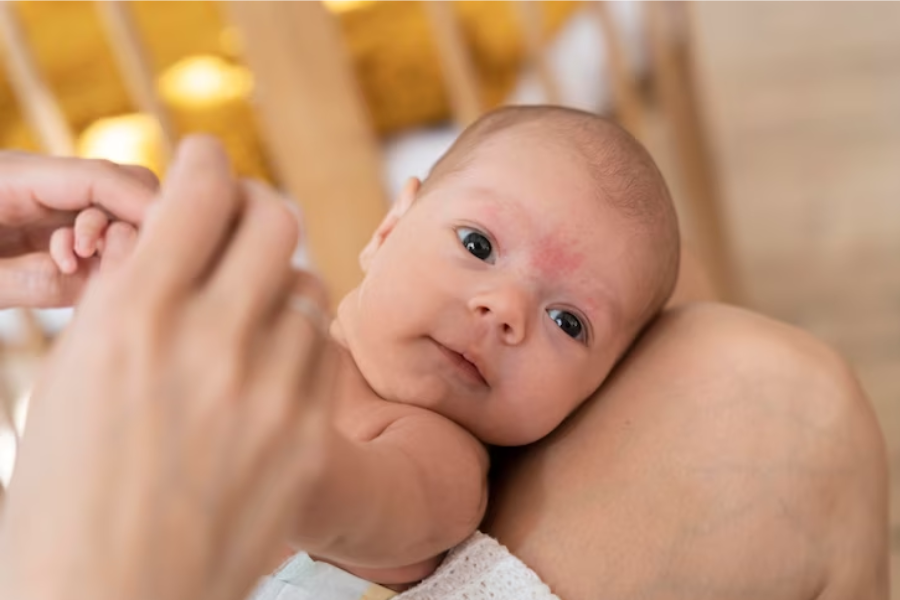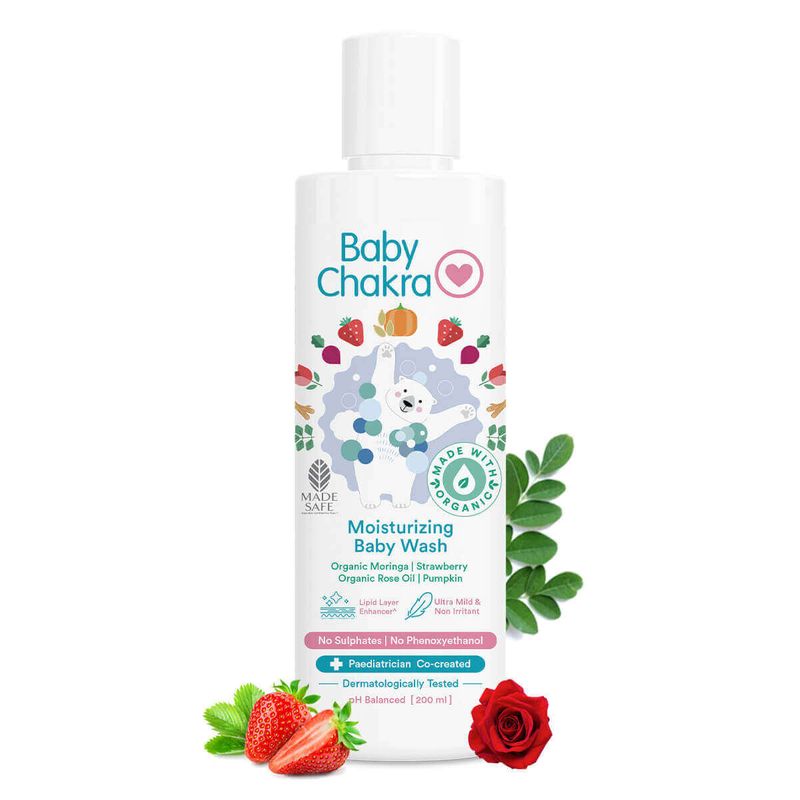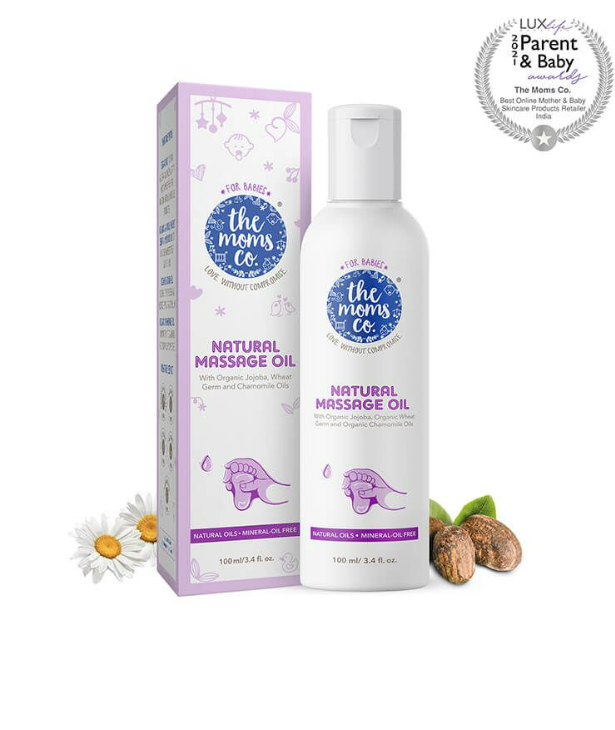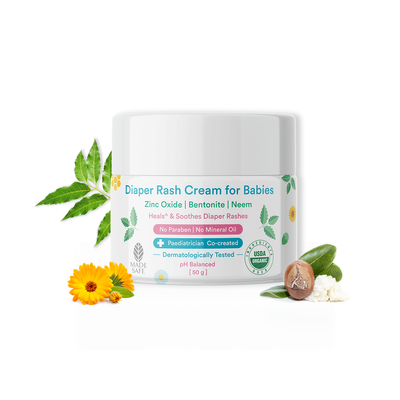
Birthmarks In Newborns: Causes, Types, and Treatment Options
2 May 2023 | 5 min Read
Manisha Pradhan
Author | 1053 Articles
Birthmarks in newborns are common, with approximately one in ten babies born with some form of these unique skin markings. While they are generally harmless, they can sometimes create anxiety and curiosity among parents.
Here’s all that you need to know about birthmarks in newborns, their causes, types, and potential treatment options.
What Are Birthmarks?
A birthmark is a benign irregularity on the skin that is present at birth or appears shortly after. They come in various shapes, sizes, and colours, ranging from pale pink to dark brown. Birthmarks can be flat or raised and can appear anywhere on the body. While the exact cause of birthmarks remains unclear, researchers believe they are a result of genetic factors, vascular development, and environmental influences.
Causes Of Birthmarks In Newborns
There are several theories regarding the causes of birthmarks in newborns. Some researchers suggest that birthmarks are due to an overgrowth of blood vessels, pigment cells, or other skin components during fetal development. Others believe that genetic factors may play a role, with certain genes predisposing individuals to develop birthmarks.
Additionally, some studies indicate that environmental factors, such as exposure to certain chemicals or medications during pregnancy, may increase the likelihood of a baby being born with a birthmark.

Types Of Birthmarks In Newborns
Birthmarks can be broadly classified into two categories: pigmented and vascular. Pigmented birthmarks occur when there is an excess of pigment-producing cells, while vascular birthmarks result from abnormal blood vessel development.
Pigmented Birthmarks
- Cafe-au-Lait Spots: These are light brown, flat, and oval-shaped spots that can appear anywhere on the body. They are common and usually harmless, but the presence of multiple spots may be indicative of an underlying genetic disorder.
- Mongolian Spots: Common among individuals with darker skin tones, Mongolian spots are flat, bluish-grey patches typically found on the lower back and buttocks. They usually fade by adolescence and are not indicative of any medical concerns.
- Congenital Melanocytic Nevus: This type of birthmark is a mole that is present at birth. While most are harmless, a large congenital melanocytic nevus can have a slightly increased risk of developing into skin cancer.
Vascular Birthmarks
- Hemangiomas: These are raised, bright red birthmarks caused by a collection of small blood vessels. They can appear anywhere on the body and may grow rapidly during the first year of life before gradually shrinking.
- Port-Wine Stains: Port-wine stains are flat, red or purple marks that are caused by a malformation of blood vessels. They can appear on any part of the body and do not fade with time. In some cases, they may be associated with other medical conditions.
- Salmon Patches (Stork Bites or Angel Kisses): These are flat, pink patches typically found on the forehead, eyelids, or the back of the neck. They are the most common type of vascular birthmark and usually fade during the first years of life.
Treatment Of Birthmarks In Newborns
Most birthmarks are harmless and do not require treatment. However, if a birthmark causes cosmetic concerns or is associated with medical complications, several treatment options may be considered.
Laser therapy: This is often used to treat port-wine stains and hemangiomas, as it can target the blood vessels without damaging the surrounding skin.
Corticosteroids: These medications can be used to treat hemangiomas by reducing their size and growth. They can be administered orally, topically, or through injections, depending on the size and location of the birthmark.
Beta-blockers: These medications, such as propranolol, are sometimes prescribed to treat hemangiomas. They work by constricting blood vessels, thereby slowing the growth of the birthmark and potentially causing it to shrink.
Surgery: In some cases, surgical removal of the birthmark may be necessary, especially if it poses a risk to the child’s health or is causing significant cosmetic concerns.
Camouflage cosmetics: Specialised cosmetics can be used to cover up birthmarks, providing a temporary solution for cosmetic concerns.
When to Consult a Doctor
While most birthmarks are harmless, it is essential to consult a paediatrician if you notice any changes in the appearance of your child’s birthmark or if it is causing discomfort. Additionally, if your child has a large or unusual birthmark, it is advisable to consult a specialist for further evaluation and to discuss potential treatment options.
FAQs:
How long do baby birthmarks last?
Most birthmarks in newborns disappear by the toddler years.
What is the danger of birthmarks?
While most birthmarks in newborns are not a cause for concern, certain types can increase the risk of skin cancer. It is important to consult the doctor if your infant’s birthmark bleeds, itches, or becomes infected.
Do birthmarks hurt babies?
Most birthmarks in newborns are harmless and do not hurt but certain birthmarks such as hemangiomas can get infected and cause discomfort sometimes.
Although the exact cause of birthmarks remains a mystery, they are generally harmless and often fade over time. However, if a birthmark poses a health risk or causes significant cosmetic concerns, there are various treatment options available to help manage the condition.
Recommended skincare products for newborns
Also Read:
The Power Of Touch: 5 Reasons Why Newborns Need Your Loving Caress
Is It Normal For Newborns To Grunt Or Is It A Sign Of Something Serious?
A


Related Topics for you
Suggestions offered by doctors on BabyChakra are of advisory nature i.e., for educational and informational purposes only. Content posted on, created for, or compiled by BabyChakra is not intended or designed to replace your doctor's independent judgment about any symptom, condition, or the appropriateness or risks of a procedure or treatment for a given person.



